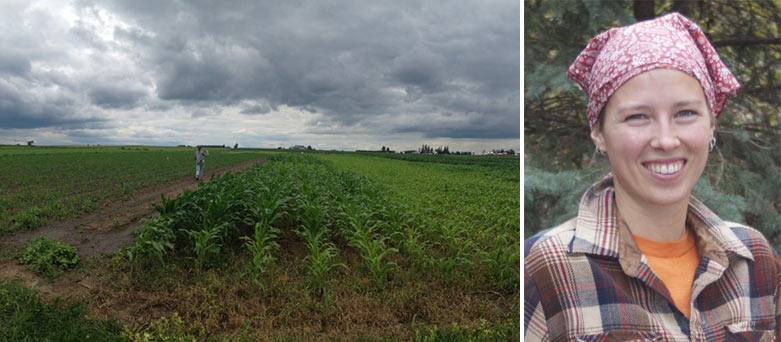
Traversing the landscape of the Upper Midwest, there is a high likelihood you’ll see corn fields. Lots and lots of corn fields. Here, leftover stalks are most often plowed under the earth in late autumn, where they can replenish the ground, becoming soil organic matter.
Soil organic matter is made up of partly decomposed plants, soil animals, and microbes. It’s mostly carbon, but it also includes nitrogen and other nutrients that bind together to encourage plants to take in water, while preventing both runoff and drought.
These days, corn stalks have become more and more valuable for use as a biofuels feedstock. Farmers are now able to use leftover corn stover to produce energy and extra money. But that added value also poses a problem: if there’s no plant matter going back into the soil, how does carbon get replenished?
At the University of Wisconsin Arlington Agricultural Research Station about 30 minutes north of Madison, Anna Cates is studying how to replenish, or fix, carbon into the soil by planting other crops along with the corn.
“If you leave nothing, you have no carbon inputs in the ground, and the nutrient levels become so low that they can’t be beneficial to the crops.” says Cates, a University of Wisconsin–Madison graduate student in agronomy and a researcher at the Great Lakes Bioenergy Research Center (GLBRC).
Working under the tutelage of Randy Jackson, a UW–Madison agronomy professor and grassland ecology expert, Cates is replacing the stover that might otherwise be left behind with two different cover crops.
In one plot, a hardy grass called winter rye is planted after the corn harvest and allowed to grow until early May. Throughout the winter, it fixes carbon into the soil, before being harvested just before corn planting season.
“The great thing about winter rye is that it is so resilient in cold conditions,” says Cates. “It can be planted in November and grow enough in a month to survive the winter, so a good crop can be grown before it’s time to sow the corn. We’re trying to optimize the system so that both crops are successful, all while maintaining a soil balance.”
To find out if the plan works, Cates will measure carbon in corn and cover crop biomass. She’s also going to gauge soil respiration, which is the carbon breathed out by the tiny little microbes living below the surface when they decompose plant roots and leaves. A system with lower soil respiration produces more plant carbon, and thus may be storing more of the nutrient in the soil.
In another plot, bluegrass, is cultivated in between rows of corn. In this trial, a carpet of bluegrass grows around the plant year-round.
“The trick is for the grass to replenish the soil throughout the year without inhibiting corn growth,” says Cates. “Because it’s a perennial, bluegrass should be really good at maintaining soil carbon levels, keeping microbial communities healthy, and attracting beneficial insects that keep the pest populations down.”
After each season, Cates compares soil carbon measurements from the bluegrass and winter rye plots to a conventionally sown corn field.
Now into its second season, the experiment will take time to germinate, so to speak. That said, Cates has already seen data from 2014 demonstrating that the rye cover crop appears give a boost to soil carbon. The grass plot measurements will begin in earnestness in 2015.
“In the end, it’s a simple math problem,” says Cates. “We add up how much plant matter is produced and subtract the carbon dioxide and the harvest. If we end up building more carbon than we take out, it’s a victory for the soil, but also for the biofuels industry.”